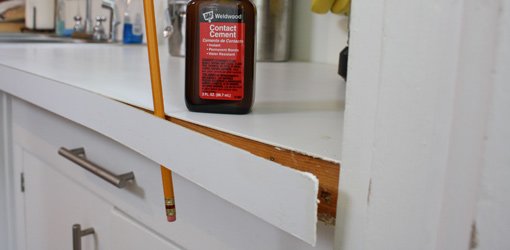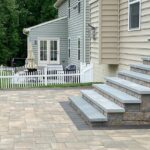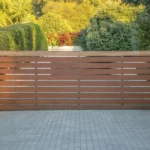What Glue to Use for Laminate Countertops? When installing or repairing laminate countertops, choosing the right adhesive is crucial for a long-lasting and secure bond. Here’s a comprehensive guide to the types of glue you can use for laminate countertops, along with tips for application:
Types of Glue
Contact Cement
Description: The most commonly used adhesive for laminate countertops.
Types
Solvent-based: Known for strong, durable bonds, but it has strong fumes and is flammable.
Water-based: Safer to use with fewer fumes, but it requires longer drying times.
Application: Apply to both the laminate and the substrate (usually plywood or particleboard). Allow it to dry to the touch before pressing the surfaces together.
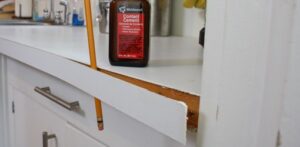
Epoxy Glue
Description: A two-part adhesive consisting of a resin and a hardener.
Strengths: Provides a very strong bond, suitable for heavy-duty applications.
Application: Mix the two components as per the manufacturer’s instructions and apply to the surfaces to be bonded. Requires clamping and curing time.
Polyvinyl Acetate (PVA) Glue
Description: Often used for woodworking, this is a versatile and easy-to-use adhesive.
Strengths: Good for bonding wood to laminate, but not as strong as contact cement.
Application: Apply to one surface, press together, and clamp until dry.
Urethane-Based Adhesive
Description: Known for its flexibility and water resistance.
Strengths: Ideal for areas prone to moisture exposure.
Application: Apply a thin layer to the substrate and press the laminate firmly in place.
What Glue to Use for Laminate Countertops?
Preparation and Application
Surface Preparation:
Clean both the substrate and the laminate thoroughly to remove dust, grease, and debris.
Sand the surfaces lightly to ensure better adhesion, and wipe away any dust.
Application Process:
Contact Cement:
Apply an even coat on both surfaces.
Allow the adhesive to dry until it’s tacky but not wet (usually 15-30 minutes, depending on humidity and temperature).
Carefully align the laminate and press it onto the substrate. Use a roller to apply even pressure and eliminate air bubbles.
Epoxy Glue:
Mix the resin and hardener according to instructions.
Apply to the substrate and press the laminate in place.
Use clamps to hold the laminate in place until the epoxy cures.
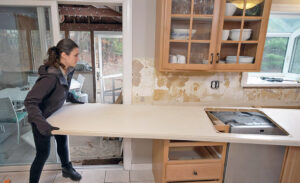
PVA Glue:
Spread an even layer on the substrate.
Position the laminate and apply pressure.
Use clamps to hold the pieces together until the glue dries.
Urethane-Based Adhesive:
Apply a thin layer to the substrate.
Press the laminate into place and apply even pressure.
Allow the adhesive to cure as per the manufacturer’s instructions.
Tips for Success
Ventilation: Ensure proper ventilation when using adhesives, especially solvent-based contact cement, due to strong fumes.
Safety Gear: Wear protective gloves and eyewear to prevent skin and eye contact with adhesives.
Temperature and Humidity: Adhere to the recommended temperature and humidity levels for the adhesive you are using. These factors can affect drying and curing times.
Roller Tool: Use a laminate roller to apply even pressure across the surface, which helps in achieving a strong bond and eliminates air pockets.
Edge Banding: For a professional finish, consider using edge banding adhesive specifically designed for the edges of laminate countertops.
Read Also.12 Eye Catching Paver Steps Against House?
